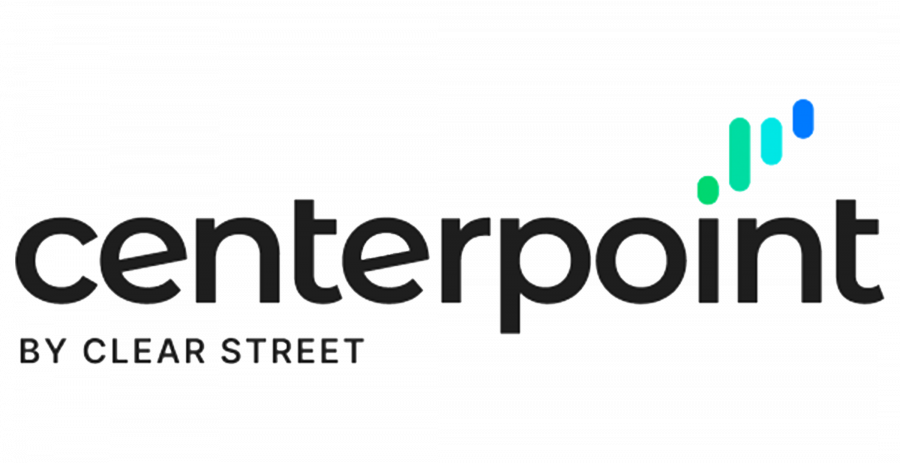The post What is Modern Portfolio Theory? by Anna Yen appeared first on Benzinga. Visit Benzinga to get more great content like this.
Investing can be complicated with many moving parts, but modern portfolio theory (MPT) is a valuable tool to piece them together efficiently. If you’ve ever wondered how to construct a well-balanced investment portfolio that maximizes gains while minimizing risks, this article is your key to unlocking the secrets of MPT.
Table of contents
[Show]
How Does Modern Portfolio Theory Work?
At its core, MPT is a mathematical framework that guides investors in building diversified portfolios that offer the best risk-reward tradeoff. It’s like the GPS for your financial journey, helping you navigate the complex landscape of investment choices.
The main idea behind modern portfolio theory is that the performance of a portfolio depends not only on the individual performance of each asset but also on how they interact with each other. In other words, the risk and return of a portfolio are determined by the correlation between the assets, which measures how they move in relation to each other. By combining assets with different levels of risk and return and different degrees of correlation, investors can craft a portfolio that suits their preferences and objectives.
Historical Background of Modern Portfolio Theory
Modern portfolio theory (MPT) owes its development to influential figures in economics and finance.
Harry Markowitz’s 1952 paper, “Portfolio Selection,” published in The Journal of Finance, established the foundations of MPT. The paper introduced concepts such as expected return, variance, covariance and efficient frontier. Markowitz’s work earned him the Nobel Prize in Economics in 1990.
James Tobin later expanded on Markowitz’s theory in 1958 by incorporating the risk-free asset and deriving the capital market line. This line depicts the optimal trade-off between risk and return for any portfolio.
In the 1960s, William Sharpe, John Lintner and Jan Mossin independently developed the Capital Asset Pricing Model (CAPM), which relates an asset’s expected return to its systematic risk, measured by beta. CAPM also implies that the market portfolio is optimal for all investors.
Stephen Ross proposed an alternative to CAPM in 1976 with the arbitrage pricing theory (APT), which uses multiple factors to explain asset returns.
Understanding the Key Principles of Modern Portfolio Theory
Having explored its history, here are the core principles that underpin MPT.
Diversification
Investors reduce their overall portfolio risk by spreading investments across stocks, bonds, real estate, commodities and other asset classes. The idea is that assets with low or negative correlation can offset each other’s poor performance, leading to more stable returns. However, diversification has limitations. It cannot eliminate systematic risk, which affects the entire market. Diversification may be challenging and costly because of transaction costs, liquidity and legal or regulatory restrictions. Investors must weigh the benefits and costs of diversification to determine the optimal level for their portfolio.
Risk and Return Tradeoff
Investors can expect higher returns by taking higher risks but demand higher compensation for the increased risk. The risk and return tradeoff is captured by the concept of efficient frontier and capital market line (CML). The efficient frontier curve illustrates the optimal combination of assets for a desired level of risk or return, while the capital market line depicts the best possible tradeoff between risk and return for any investor. The Sharpe ratio (the slope of the CML) gauges the excess return per unit of risk. Choosing a portfolio on the efficient frontier or CML that aligns with an individual’s risk tolerance and investment goals can lead to optimal returns.
Asset Allocation
Asset allocation involves spreading investments across stocks, bonds, real estate and commodities based on your risk tolerance and investment goals. Each asset class has unique characteristics and behaviors regarding risk and return. For example, stocks can offer high returns but are considered risky, while bonds are less risky but offer lower returns. Real estate is less liquid but more stable than stocks or bonds, while commodities are volatile but offer inflation-hedging benefits. When making asset allocation decisions, consider your time horizon, risk tolerance, investment goals and personal preferences. A diversified, strategic, tactical or hybrid approach can help you achieve your optimal target asset allocation.
Applying Modern Portfolio Theory in Practice
Here are practical ways to apply the key principles and concepts of modern portfolio theory to construct an efficient portfolio.
Construction of an Efficient Portfolio
First, use historical data or forecasts to identify available assets and their expected returns, risks and correlations. Next, calculate the expected return and risk of various combinations of assets using mean-variance analysis. Then plot these combinations on a graph to form the efficient frontier using tools like Excel or R. Finally, select the optimal combination of assets that matches your risk tolerance and investment goals based on their attractiveness as measured by tools like the Sharpe ratio or utility function. An efficient portfolio provides the highest expected return for a specified level of risk or the lowest risk for a given level of return.
Portfolio Performance Evaluation and Rebalancing
After constructing an efficient portfolio using modern portfolio theory, you must monitor and evaluate its performance over time and make adjustments when necessary. This vigilance is because market conditions, economic factors or other events may cause the expected returns, risks and correlations of the assets to change. To ensure your portfolio stays on track, follow these steps:
- Measure your portfolio’s actual return and risk using historical data or current prices. You can use standard deviation, variance or value at risk to measure your portfolio risk.
- Compare your portfolio’s actual return and risk with your expected return and risk and your target asset allocation.
- Rebalance your portfolio if there is a significant deviation from your expectations or targets or a change in your risk tolerance or investment goals.
Rebalancing can help maintain your desired level of risk and return, take advantage of market opportunities or inefficiencies, reduce transaction costs and taxes and enhance your portfolio performance. However, it also has costs and risks, such as transaction costs, market timing risks and emotional biases. Therefore, carefully weigh the benefits and costs of rebalancing and choose the optimal frequency and method for your portfolio.
Alternative Approaches and Models in Portfolio Management
Some alternative approaches and models to modern portfolio theory in portfolio management include behavioral finance, value investing and working with an investment manager to help with diversification. These models challenge some of the assumptions or implications of MPT and offer different perspectives or strategies for investors.
Behavioral finance is a field that studies how psychological factors affect financial decision-making. It provides insights and tools to help investors overcome cognitive biases and improve their portfolio performance.
Value investing is a strategy that involves buying undervalued stocks that have strong fundamentals but low prices relative to their intrinsic value. It offers methods and criteria to help investors identify and exploit mispricing opportunities.
Working with an investment manager is an option that involves hiring a professional or an organization to manage investments on behalf of investors. It offers advantages and disadvantages and shows that investors may need help applying modern portfolio theory.
Diversify Your Portfolio with Top Rated Brokerage Accounts
To help you find the best brokerage account for your portfolio diversification needs, Benzinga compiled a table that compares some of the top-rated brokerage accounts in terms of these factors.
Modern Portfolio Theory — A Powerful Diversification Tool
Investing requires knowledge and modern portfolio theory offers a potent framework for constructing and managing diversified portfolios. You can navigate the financial markets by grasping diversification principles, risk-return tradeoffs and asset allocation. However, MPT isn’t a one-size-fits-all approach. It’s crucial to tailor your investment strategy to your unique financial objectives, risk appetite and time horizon. Whether you prefer a hands-on or professional approach, MPT’s principles can guide you toward a more secure financial future.
Frequently Asked Questions
Does modern portfolio theory work?
Yes, modern portfolio theory has been widely used and tested over the years and has proven effective in helping investors build diversified portfolios that balance portfolio risk and return.
Answer Link
How does modern portfolio theory relate to the efficient frontier?
Modern portfolio theory is closely related to the efficient frontier. The efficient frontier represents the optimal portfolios that provide the highest return for a given level of risk or the lowest risk for a desired level of return, as determined by MPT.
Answer Link
Is modern portfolio theory required by fiduciaries of trusts?
While modern portfolio theory is not legally required, fiduciaries of trusts and other investment professionals often use its principles to guide their investment decisions.
Answer Link
The post What is Modern Portfolio Theory? by Anna Yen appeared first on Benzinga. Visit Benzinga to get more great content like this.






